
Nativity scenes tradition
From Wikipedia:
In the Christian tradition, a nativity scene (also known as a manger scene, crib, crèche (/krɛʃ/or /kreɪʃ/), or in Italian presepio or presepe, or Bethlehem) is the special exhibition, particularly during the Christmas season, of art objects representing the birth of Jesus.
The tradition of Christmas nativity scenes was established in 1223 by Saint Francis of Assisi in Umbria, Italy. Together with their friends, they brought a live donkey and an ox to the cave, which they converted into a chapel, and staged a nativity scene, in which the priest celebrated the first Christmas midnight mass.
In Prague (Praha,today capital of Czech Republic), the first nativity scene was probably built in 1560 in the Dominican church of St. Clement. No one knows exactly what he looked like. It is believed to have been an imitation of the Bethlehem grotto with the manger where the baby Jesus was born. Following this pattern, the manger began to spread to other churches and monasteries.
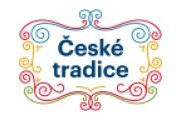
The reforms of Maria Theresa and Joseph II. in the second half of the 18th century, they led to a ban on the construction of nativity scenes in churches throughout the territory of the Austrian monarchy. Paradoxically, this ban helped the development of the production and construction of nativity scenes, and the tradition was gradually transferred to households. Nativity scenes began to take shape, which differed from each other in the technology of nativity production and the appearance of individual figures.
Towards the end of the 18th century, during the Age of Enlightenment, cribs left the churches and took hold in villages and towns among the common people. To the basic figures - Jesus in the manger, Mary, Joseph, the ox, the shepherds with their flocks and the three wise men - people added other figures from their immediate surroundings. The characters were set in an often fantastical landscape. The materials from which nativity scenes were built were diverse.
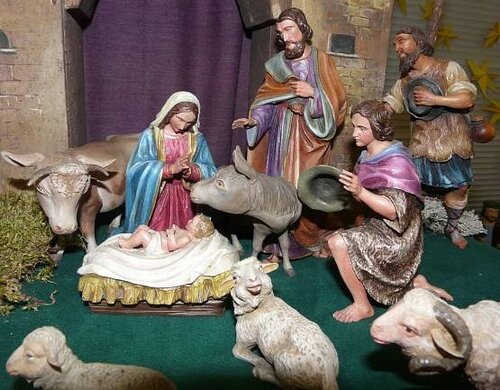
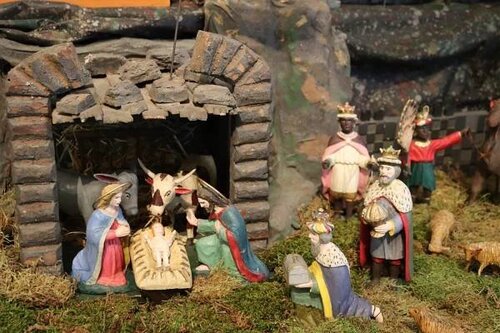
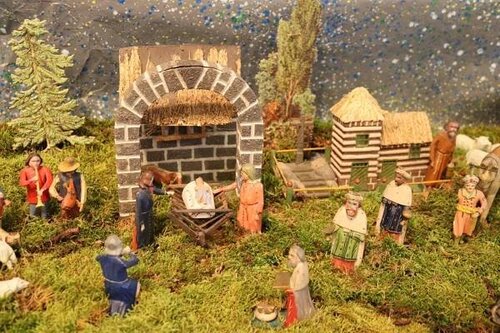
Nativity scenes were made of paper, hand-painted, carved from wood or modeled from various plastic materials. In Nativity scene too, numerous regional differences have developed over the centuries, both in concept and in material.
The nativity scene was the symbol of Christmas, but in the 19th century it was gradually replaced by the Christmas tree, which eventually became the new symbol of Christmas.
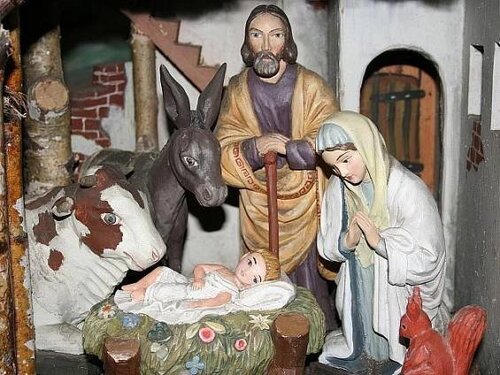
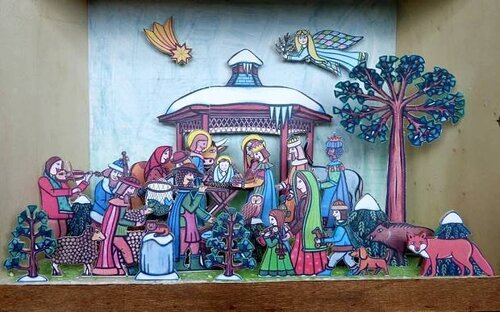
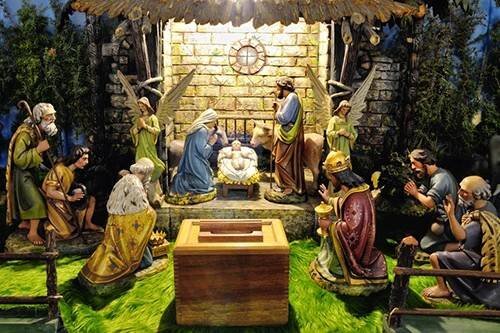
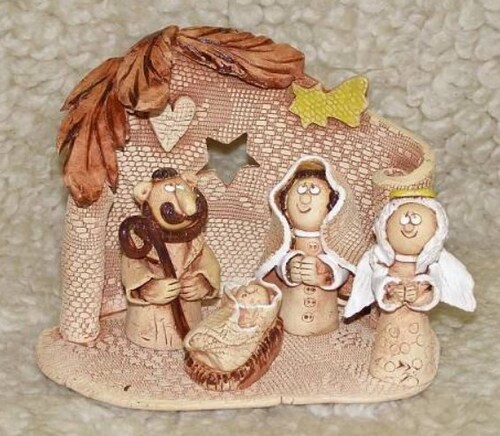 Ceramics nativity scenes
Ceramics nativity scenes
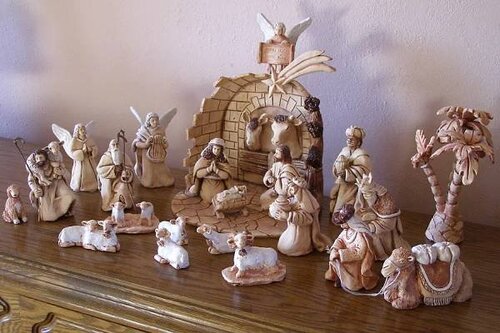
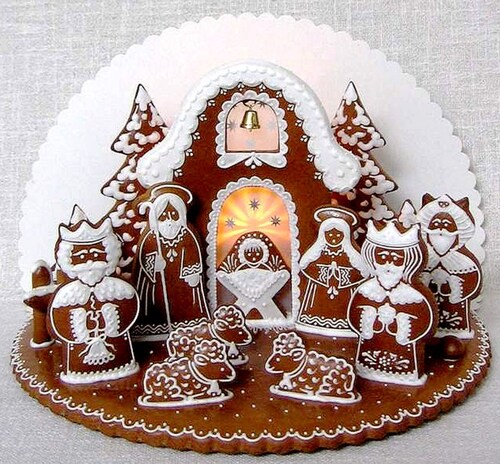 Made of ginger bread dough
Made of ginger bread dough
Folk makers liked to incorporate attributes of their home into their nativities. And they introduced also a lot of untipical materials - dough, glass, paper...
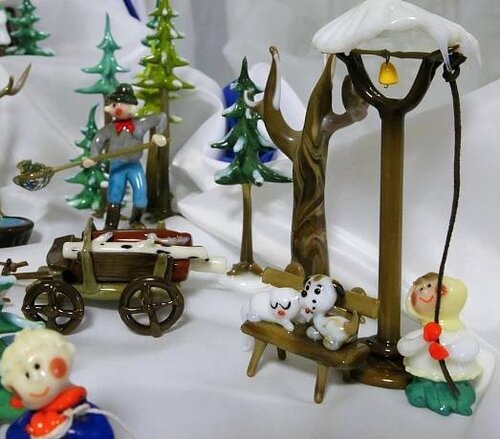
Nativitiy scenes made of glass as glass production has a very long tradition in Bohemia.
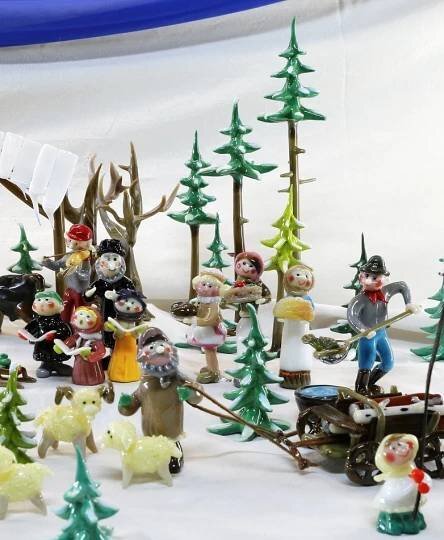
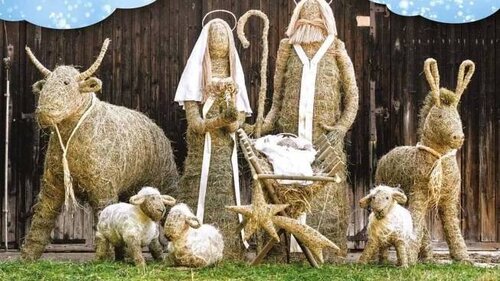 This one is made of straw
This one is made of straw
Winged altar
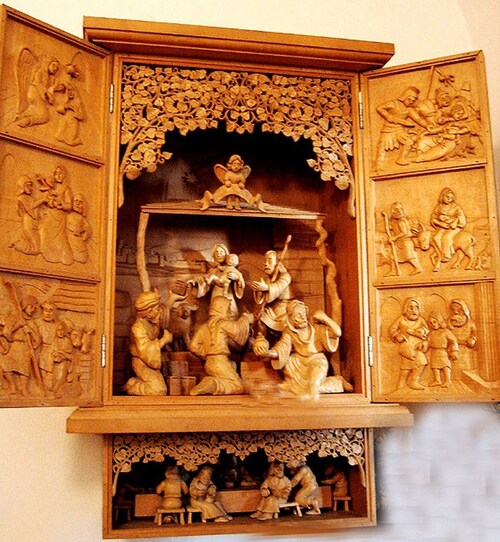
Author Miroslav Valenta, businessman from the Staré Město near Uherské Hradiště. The crib in the form of a winged altar is a work from 1990-1991 made of linden wood, ash, spruce and walnut. The nativity scene is impregnated with colorless varnish and polished. Rich ornamental decoration. It was exhibited at the World Exhibition of Nativity Scenes in Hradec Králové.
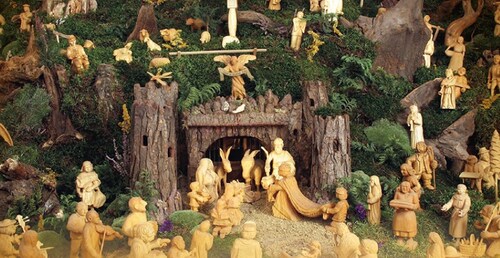
Nativity scene from Bohemian town Třešť
The world's largest nativity scene was created by carver Jiří Halouzka in Jiříkov and has 138 (December 2007) life-sized wooden sculptures
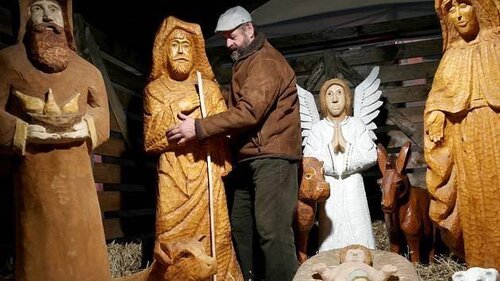
In 1950, the World Association of Nativity Scenes was established. It was created by the Italian Angelo Stefanucci, who was also the first president. The founding members of the world association of nativity scenes UN-FOE-PRAE (Universalis Foederatio Praesepistica) were the nativity scenes of Italy, Germany, France, Austria, Switzerland and Spain. The headquarters of the organization is in Rome. Every four years, the association holds a world congress connected with the nativity scene exhibition.
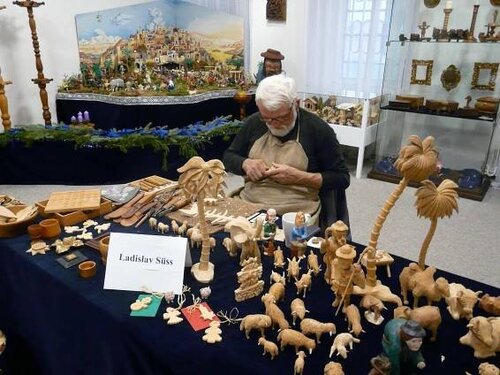
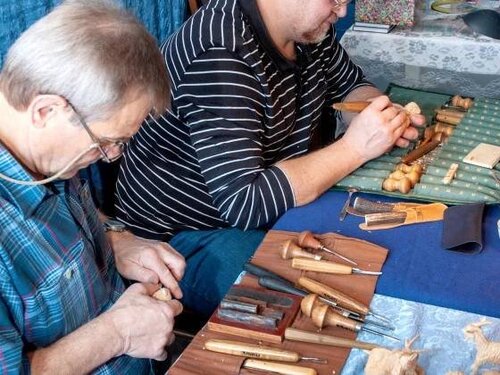
Tradition continues, know during the Advent and Christmas time a lot of exhibitions showing cribs are organised.

Beautiful and blessed Christmas wishes
Margaret
